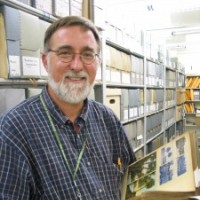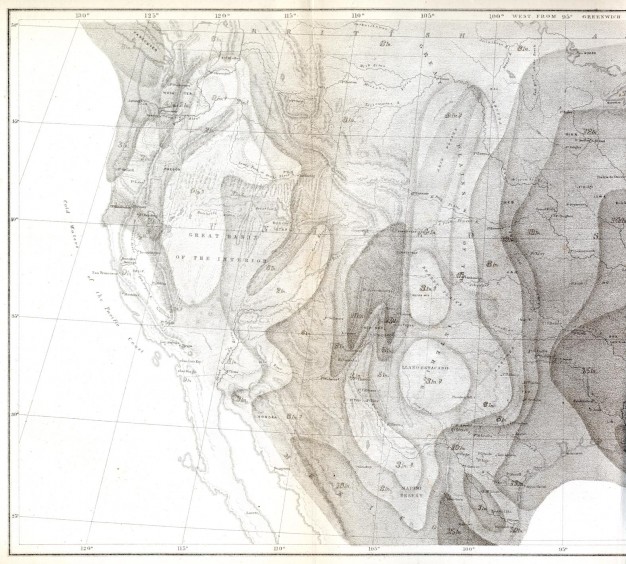Connections: It’s Always Who You Know and What You Hear
“Climate change” is a touchy subject these days. But in order to have arguments in the first place, some baseline information about past climate has to be known. In the mid-19th century, climate conditions in many places across North America, particularly in the West, still were not well recorded. It fell on the Smithsonian Institution to spearhead these studies. It needed a network of observers and correspondents who would gather this information to send to Washington, and a manuscript list of those thousand people, now in the American Philosophical Society’s collections, is the beginning of two American tales.
Enter Lorin Blodget, statistician, physical scientist, and APS Member (1872). In 1851 at the age of 28 he was hired by the Smithsonian in order to compile and make sense of the meteorological data that were being gathered, well paid at $50 per month. He was by most accounts brilliant, capable, and self-assured of his work. And there his troubles began.
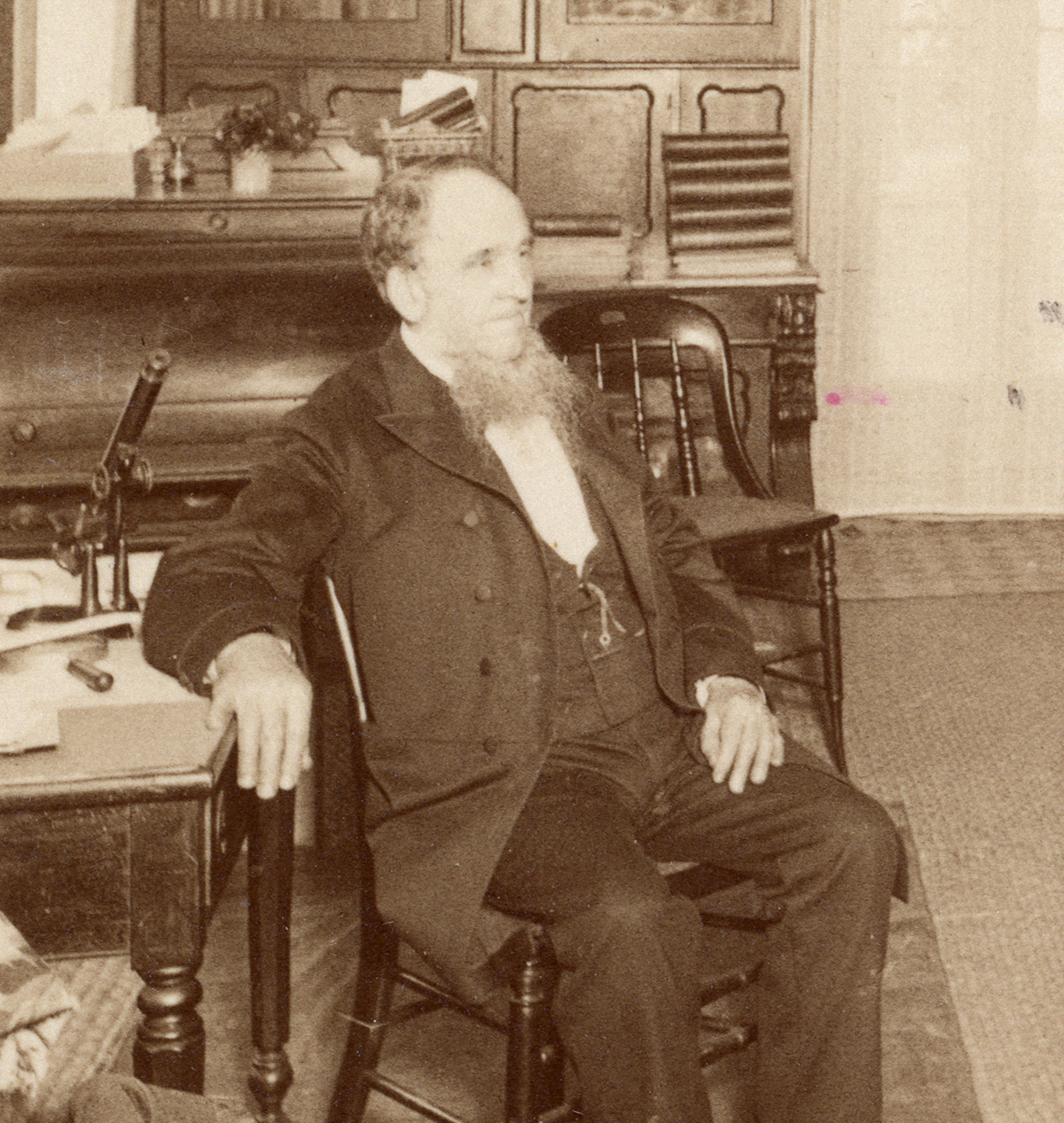
Blodget kept his scientific colleagues well apprised of his analyses, delivering three papers to the 1853 meeting of the American Association for the Advancement of Science. He had attended the meeting with his boss, Joseph Henry, who wrote later, “to my surprise I found that Mr. Blodget had entered all the papers on Meteorology entirely in his own name without mentioning the Smithsonian Institution.”
And just who was his boss, Henry? The Smithsonian secretary (that is, director), a man politically well positioned and the driver of the Smithsonian from its inception in 1846 until his death in 1878. Henry the administrator was first a scientist, acknowledged for his groundbreaking work on electromagnetics, the force behind the telegraph, and no stranger to either governmental or scientific polities.
Not only did Blodget feel that he owned the data that he worked on, he also compiled the exhaustive list of about 1,000 observers and correspondents from across North America and nearby. Now Henry asked that Blodget turn over his list. He refused, one more of a series of insubordinate actions. Henry fired him in 1854, without getting the list.
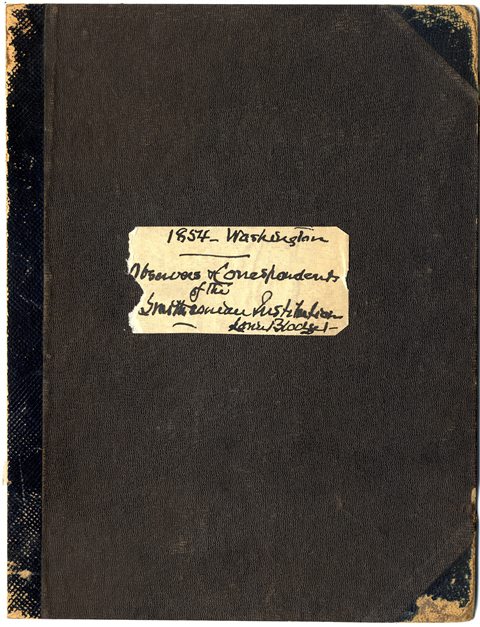
Blodget went to Philadelphia for the remainder of his life, where he did statistical work for the local Board of Trade and provided data for the U.S. War Department, Treasury Department, and Census Office. But in the meantime in 1857 he published his magnum opus, Climatology of the United States, a stout volume that was the first national and most exhaustive treatment of the subject—and more, as we shall see.
Climatology was the most influential book on American meteorology in its day, well received in America and Europe, and it did not fade quickly. This and other work led to Blodget’s election to the APS, an institution with important early American records in meteorology. In 1900, the APS received Henry’s wayward list, labeled by Blodget, “Observers and Correspondents of the Smithsonian Institution 1854.” Although its donor is not recorded, the APS also received at that time two oversized professional photographs of Blodget at work in his home in Philadelphia. His photo above is a detail from one of them.
The influence of Blodget’s Climatology finds an unexpected role in American history, too. In 1868, John Wesley Powell (another APS Member, 1889) began scientific explorations in the Colorado Rockies. Later, in his federal career, he became directors of the U.S. Geological Survey and the Smithsonian’s Bureau of American Ethnology). In Colorado he got the idea of exploring the unknown reaches of the Green and Colorado Rivers through the great canyons of Utah and Arizona. His first river expedition was in 1869, through all the canyons including the Grand. Although Powell’s biographers do not mention much about his own preparatory studies prior to his western explorations, Lorin Blodget’s unique, still-fresh Climatology, with its data and numerous nationwide climate maps, would have been impossible to overlook.
Climatology is much more, though. It embraces the physical geography of the United States and goes into great depth about the influences of the shape of the land on climate and agriculture, very important considerations at any time. Yet we find a devil in its details.
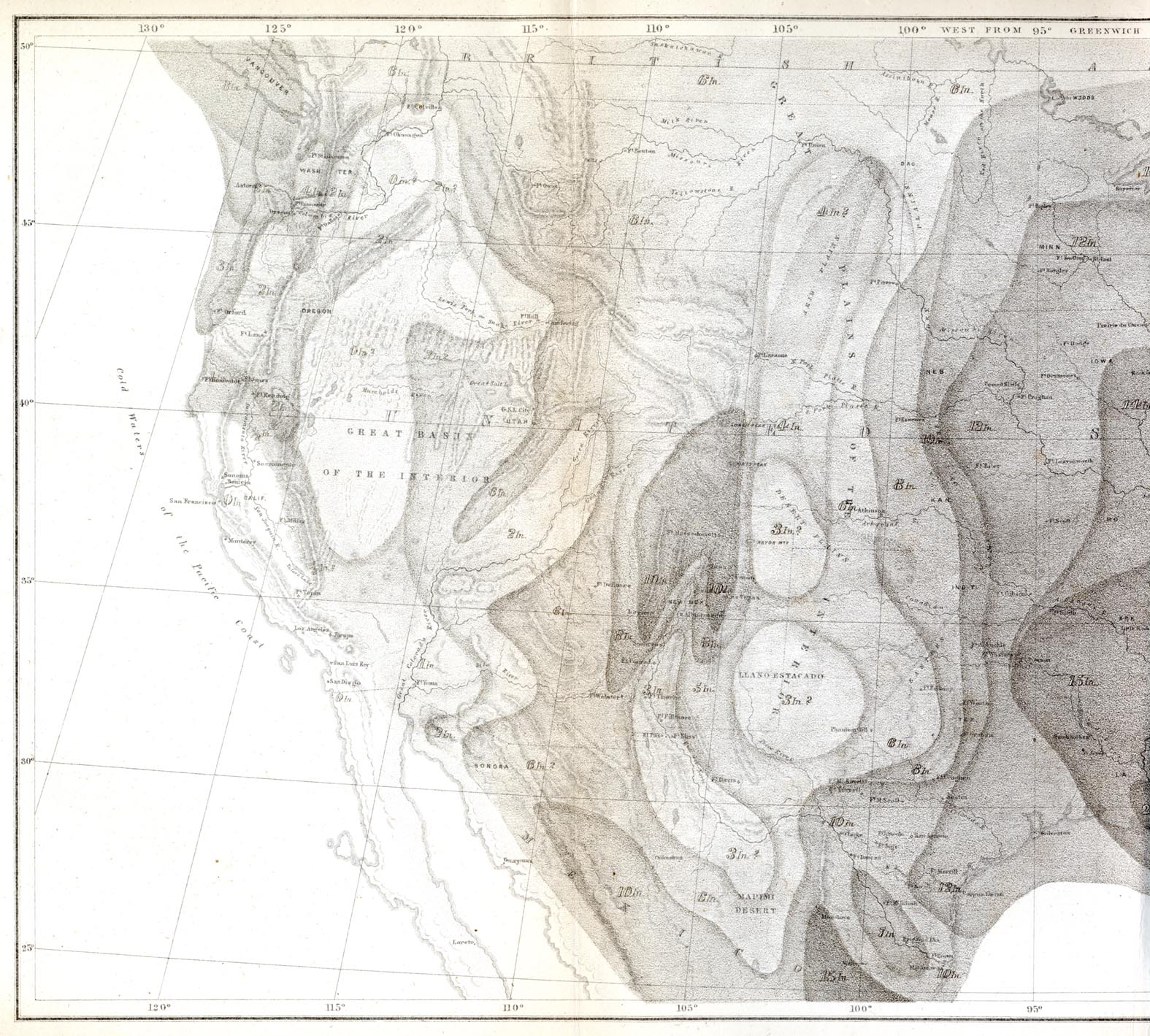
On page 90 Blodget casually mentions, “the [plateau of the] Sierra Madre on the west extends some distance toward the Colorado River, forming the Grand Cañon, in regard to which little is positively known beyond this general fact.” On page 97, writing briefly of the canyons of the West, he observed, “The Colorado [River] of California and its great branches, the Grand and Green Rivers, traverse these gorges through their whole course to within three hundred miles of the sea. A portion of this distance below the junction of Grand and Green Rivers is so nearly impassable because of these gorges, that the explorers who have traversed almost every other district, have been repelled hitherto, leaving much of it unknown.”
In a footnote to this last remark Blodget barely elaborates, “Sitgreaves . . . describes the gorges and cañons of the Colorado as very formidable . . . . The Grand Cañon of the Colorado as known to trappers and hunters, though not yet visited by scientific engineers, is placed by Sitgreaves in lat. 36o.” [Italics are Blodget’s.] The Grand Canyon does in fact shadow the 36th parallel from end to end, 277 miles by river. (Sitgreaves referred to the canyon only as “the great canyon.” He and his expedition did not visit it.) These scant remarks are all that are there.
Now, Powell has always been given the credit for creating the “Grand Canyon” tag in the year or so before his 1869 river trip, prior to which it always had been called either “Big Canyon” (the more-used name) or “the Great Canyon.” Historians during the 20th century have periodically chased after who “named the Grand Canyon,” finding patchy evidence in various sources from more or less the same time. Everything conveniently overlapped Powell’s writings, too, muddling affairs.
Yet here in Blodget’s Climatology, more than a decade earlier, is clear evidence for “the Grand Canyon” in print. During that decade the name does not show up in any other publication, nor has it been discovered in any known correspondences until Powell’s. A few earlier uses of “Grand Canyon” were used obscurely in other places, when the Colorado River’s great chasm was effectively unknown, and those were never repeated.
We may wonder whether Blodget mistakenly recalled the earlier “Great Canyon” as “Grand”, or picked up “Grand” in now unknown correspondence. Or perhaps he simply improved on the more customary “Big Canyon” all on his own. He was not one to enthuse the reader with overuses of the adjective “grand”—quite to the contrary. He used the word conventionally just once in his book—in describing the “grand and conspicuous phenomena” of summer thunderstorms of the United States (page 230). Interestingly, he did not claim the name was his own; he simply put it in print. Was his use of the term original, accidental, or borrowed? We don’t know.
In turn, where did Powell get the name that he so popularized for the world after his legendary trips down the Colorado River through Grand Canyon in 1869 and 1872-1873? Now the web and publications are full of credit to him because he did so effectively couple the Grand Canyon with his own name. If he was not original, he had to have gotten the name somewhere. Might he have read Blodget’s brief notes (quoted above) and adopted the rather more inspiring Grand Canyon?
Powell’s biographers show no evidence that he had ever encountered either Blodget or Climatology of the United States. Of course there is no particular reason for Powell to have credited Blodget for basic, published information that he may have read while planning his western trips. However, by the time Powell was arranging his river expeditions he found support from the Smithsonian, and it was that institution that would eventually also publish his reports. It could have been unwise for the politically attuned Powell to in any way mention Lorin Blodget—Joseph Henry was still at the helm.
Only one person who appears in Blodget’s list of correspondents had actually seen the Grand Canyon (but not until 1858): John Strong Newberry (APS, 1867), who was the physician and geologist for an expedition that travelled by steamboat (built specifically for the purpose in Philadelphia, incidentally) up the Colorado River, then on mules overland to the east, visiting the Grand Canyon twice en route. In his published 1861 report, Newberry referred to the chasm as the Great Canyon, while others on the expedition continued to call it Big Canyon.
So now we are left with two APS Members—either one of whom may have been the one who “named the Grand Canyon,” a story as conflicting as that of climate change. They died just a year apart, Blodget in 1901, Powell in 1902, keeping the secret.

